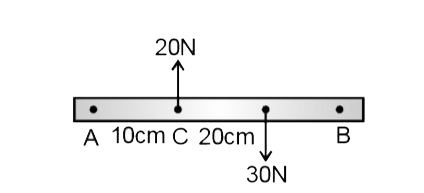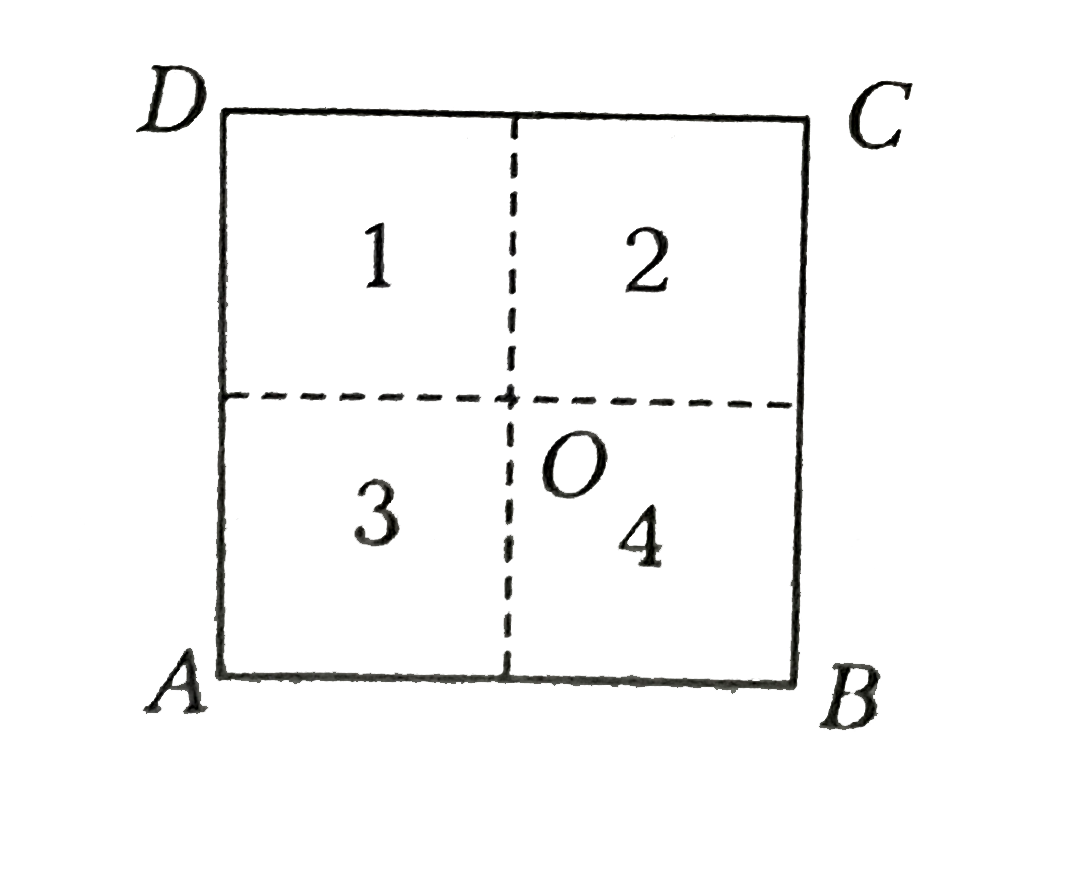A weightless rod is acted on by upward parallel forces of 2N and 4N ends A and B respectively. The total leng th of the rod AB=3m. To keep the rod in equilibrium a fo rce of 6N should act in the following manner :
downward at any point between A and B
downward at the midpoint of AB
downward at a point C such that AC=1 m
downward at a point D such that BD=1m
The correct Answer is:D

for equilibrium net torque at B end =0
−2(3)+6×x=0,x=1m
Topper's Solved these Questions
Similar Questions
Determine the point of application of third force for which body is in equillibrium when forces of 20 N & 30 N are acting on the rod as shown in figure
 View Solution
View SolutionTwo parallel unlike forces of magnitudes 15 N and 10 N are acting at point A and B respectively. If C is the point of action of resultant, then AB/BC is
View Solution
Knowledge Check
- Question 1 - Select One
A weightless rod is acted on by upward parallel forces of 2N and 4N ends A and B respectively. The total leng th of the rod AB=3m. To keep the rod in equilibrium a fo rce of 6N should act in the following manner :
Adownward at any point between A and BBdownward at the midpoint of ABCdownward at a point C such that AC=1 mDdownward at a point D such that BD=1m - Question 2 - Select One
Four rods AB, BC, CD and DA have mass m,2m,3m and 4m respectively. The center of mass of all the four rods
 Alie in region 1Blie in region 2Clie in region 3Dlie at 0
Alie in region 1Blie in region 2Clie in region 3Dlie at 0 - Question 3 - Select One
Two like parallel force 20 N and 30 N act at the ands A and B of a rod 1.5 m long. The resultant of the forces will act at the point
A90 cm from AB75 cm from BC20 cm from BD85 cm from A
Two parallel unlike forces of magnitudes 15 N and 10 N are acting at point A and B respectively. If C is the point of action of resultant, then AB/BC is
View SolutionFive forces 2N,√3N,5N,√3Nand2N respectively act at a particle P as shown in the fig
View SolutionA particle is acted on by forces 1, 2,3 and 4 N parallel to the side of a rectangle taken in order. Find resultant.
View SolutionTwo like parallel forces 5 Nand 15 N, act on a light rod at two points A and B respectively, 6 m apart. The resultant force and the distance of its point of action from the point A'are
View SolutionA rod of length L and mass M is acted on by two unequal forces F1 and F2(<F)as shown in the figure.

The tension in the rod at a distance y from the end A is given byView Solution

